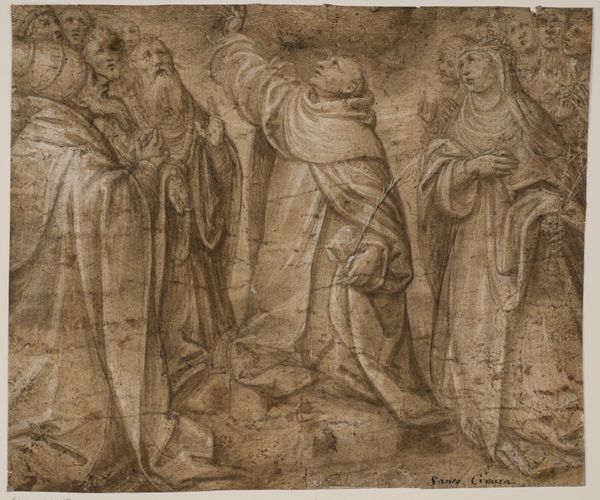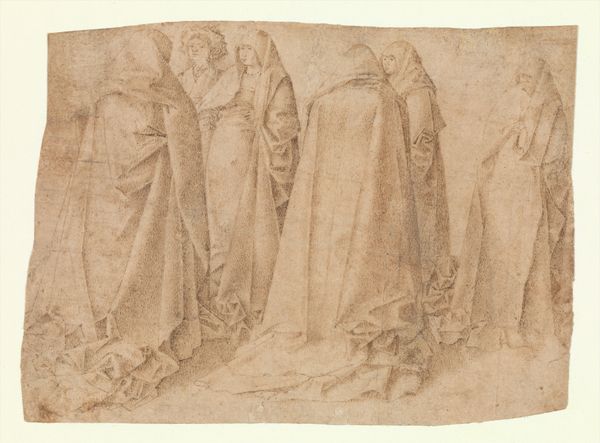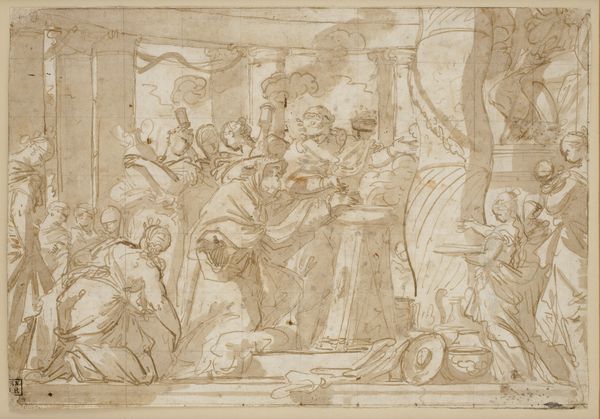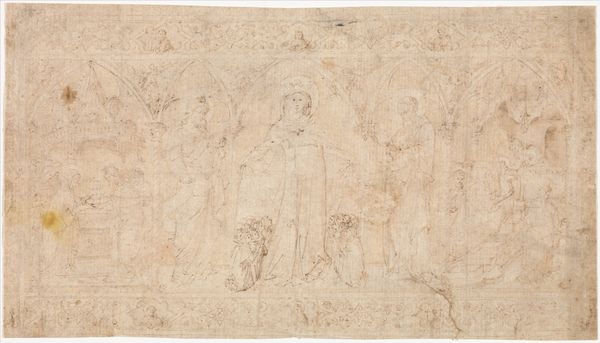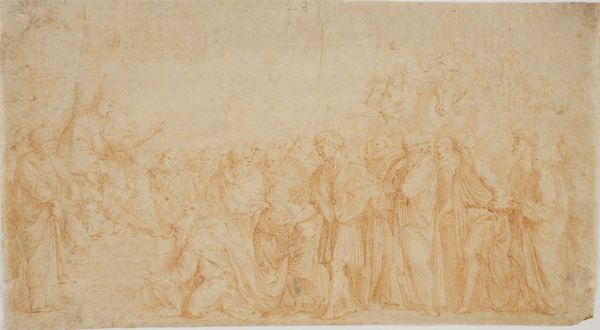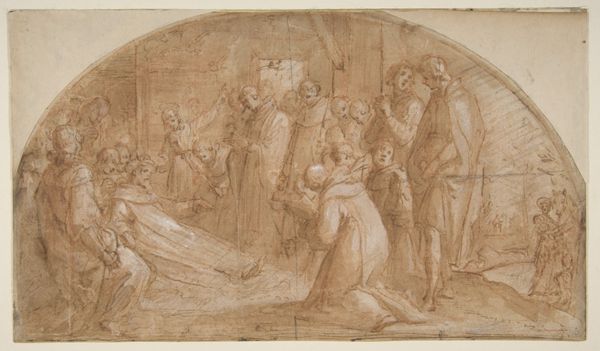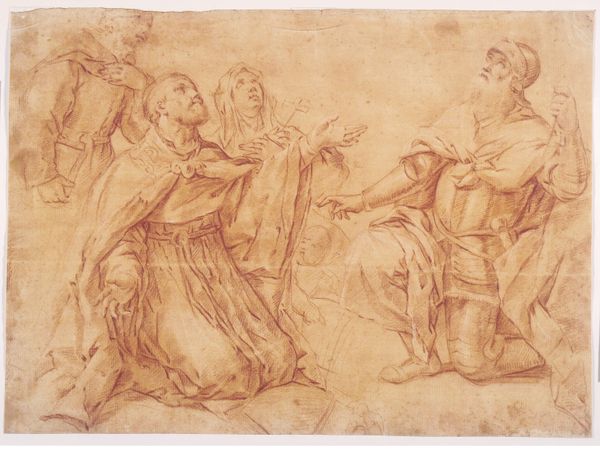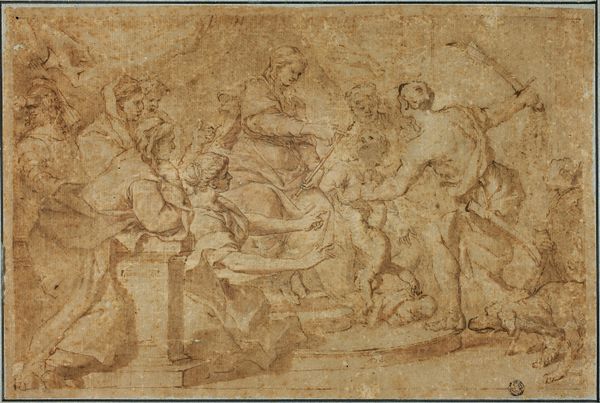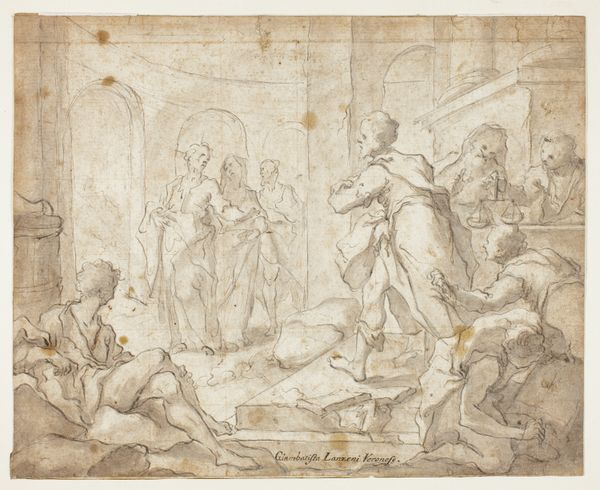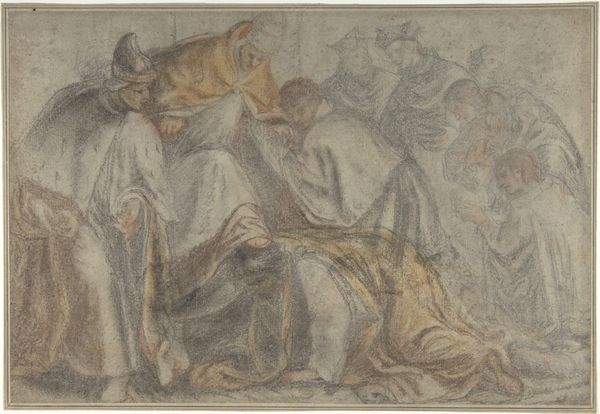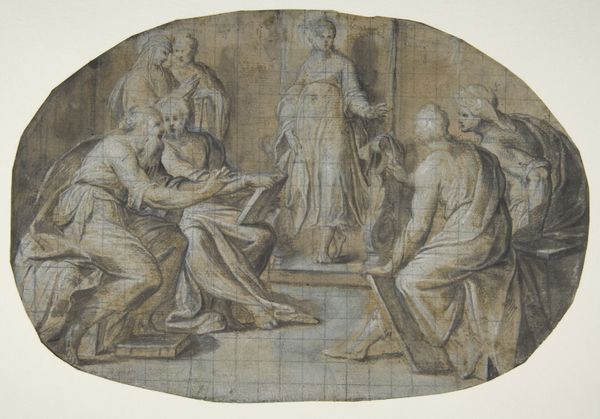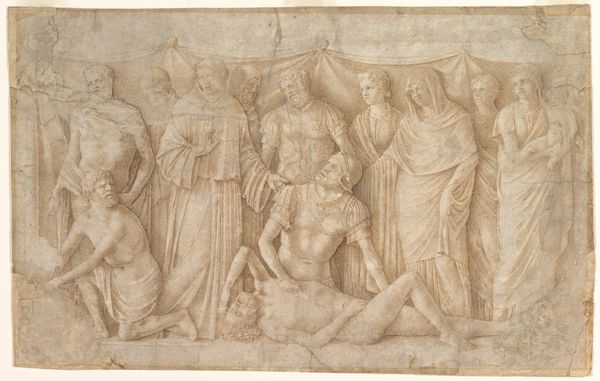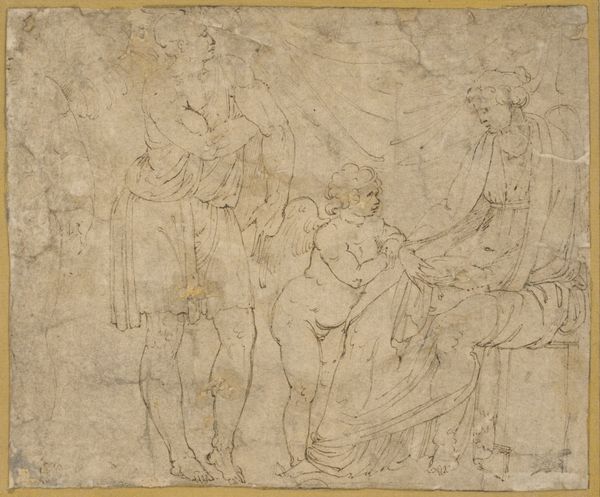
The Marriage of the Virgin (Lunette) 1580 - 1600
0:00
0:00
drawing, print, paper, ink
#
portrait
#
drawing
#
ink painting
# print
#
paper
#
ink
#
men
#
genre-painting
#
italian-renaissance
#
virgin-mary
Dimensions: 9 3/4 x 14 13/16in. (24.8 x 37.7cm)
Copyright: Public Domain
Curator: Immediately, I’m drawn to the overall tonality. It’s almost sepia-toned, lending it a quality of age and faded memory, like a rediscovered relic. Editor: Precisely. And speaking of age, let's place this work for our listeners. This is "The Marriage of the Virgin (Lunette)" by Giorgio Picchi the Younger, created sometime between 1580 and 1600. It's currently held here at the Metropolitan Museum of Art. What’s fascinating to me is how he achieved such detail, considering the apparent simplicity of the materials: primarily ink on paper. Curator: Yes, that delicate linework! Think of what "marriage" and the Virgin symbolized during the late Renaissance in Italy. Marriage as sacred and civil obligation, the Virgin representing purity, and motherhood… a potent combination visualized through the ceremony. Editor: But observe how the economic resources available would determine the availability of specific grades of paper and quality inks for printmaking processes. Printmaking facilitated a broader dispersal of artistic knowledge to workshops of different skill levels beyond those in Picchi’s immediate physical location, underscoring art’s growing function in information transmission and cultural capital accumulation. Curator: Good point. We are witnessing more than just ink on paper; it is also visual and conceptual code. Even today, wedding rituals tap into this very old symbolism. Editor: Right, and looking closely at the ways Picchi layered the ink to generate shadow and depth in this print points toward a conscious attention to technique. We often separate the “fine” from the craft dimensions, but I think exploring the processes of artistic output will show more clearly how Renaissance artistic thought functioned and spread through print culture. Curator: Indeed. What’s truly enduring about these images, beyond the immediate religious narrative, are the underlying psychological realities they tap into—devotion, promise, tradition. These emotional reverberations, they persist across eras. Editor: Definitely, but these prints offer us an incredible opportunity to reconsider art beyond aesthetic appreciation to ask questions about materials and economic contexts during a critical transition in art-making history. Curator: Agreed. The dialogue continues across centuries through Picchi's carefully preserved lines. Editor: Lines, too, made accessible only because paper production grew as dramatically as print did at the time, affecting art's accessibility as knowledge itself spread more quickly across longer distances.
Comments
No comments
Be the first to comment and join the conversation on the ultimate creative platform.
